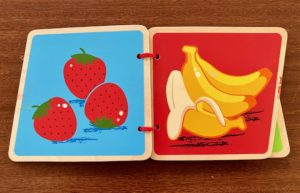Suzanne Eaddy – Playgroup Facilitator
In “Education for a New World” (1946) Maria Montessori states,
“A language is the expression of agreement among a group of men, and can be understood only by those by who have agreed that special sounds shall represent special ideas. Other groups have other sounds to represent the same ideas and things, so language becomes a wall that separates group from group while uniting members of the same group.” (P.31)
During our Playgroup sessions we may hear up to nine different languages and approximately half of the tamariki/children attending are bilingual. The parents of bilingual tamariki are all bilingual, but the grandparents who attend with grandchildren, only speak their first language. Children whose first language is English hear other languages being spoken by children and adults, and also Māori, for example during singing. Our youngest tamaiti/child at ten months old is not speaking at all, but making sounds, smiling, and demanding attention by crying when HER needs are not met, or using non-verbal communication. Given the above definition of language, there is potential for many communication barriers, however, during Playgroup sessions solutions to barriers seem to occur spontaneously.
One of the 2 ½ year old girls approached me holding out a wooden page book. I was unsure whether she wanted me to read the book with her or put it back on the shelf that was beside us. Her grandfather looked at us, took out his phone, and translated Mandarin to English “She wants to read to you”. We sat on the mat and she read all the fruit pictures to me in English. After the last page she turned to her grandfather with a huge smile, having achieved her goal. The next session she read the pictures in English and her grandfather spoke to her in Mandarin. She turned to the first page again and hesitantly read me the fruit picture in Mandarin. I attempted to repeat it and her grandfather said the name very slowly for me, several times! Now we read the book in English and Mandarin, with the same patient coaching of the Mandarin words! For all three of us this is a great experience of overcoming communication barriers.

Sign language and non-verbal communication may be effective. I indicated to one grandparent “10 minutes play, pack up then home at 11.30am.” His phone translator said, “We must go to buy things at the supermarket now.” Tamariki who learn more than one language before the age of three have a number of benefits as they get older including better communication skills and improved cognitive gains (IMS website https://ims.edu.hk/resources/benefits-of-bilingualism). Our current cohort of Playgroup tamariki are setting out with an excellent set of skills for their future education.